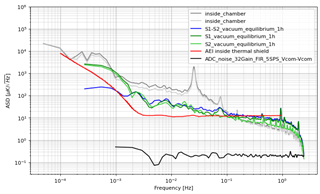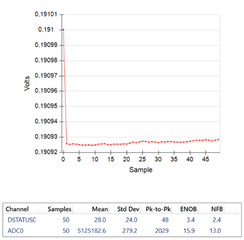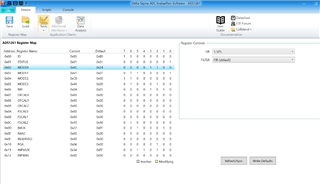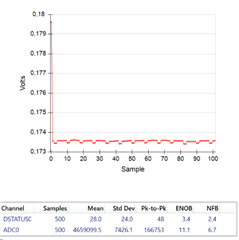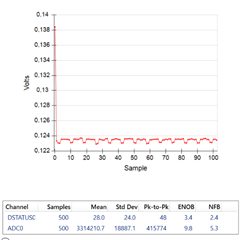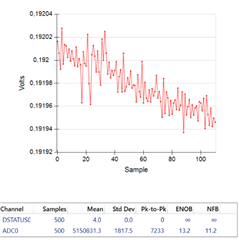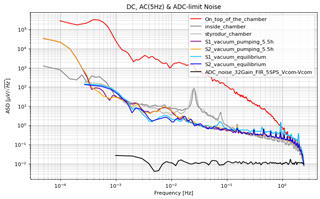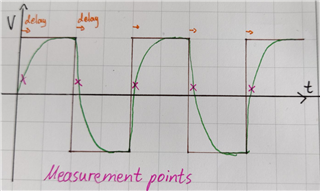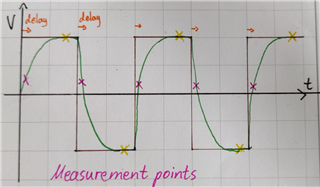Dear Bryan,
I have built a Wheatstone bridge temperature sensor and using the AC-readout.
From the data sheet i should have a noise performance down to 0.016µV_RMS (32Gain)

I did a measurement myself and got pretty much the same results.
The measurement of my temperature sensors (which are in vacuum and thermally isolated) are showing a "shoulder" at high frequencies.
I was expecting a flat noise at high frequencies.
Do you have any idea where this is coming from?
Below are my settings:
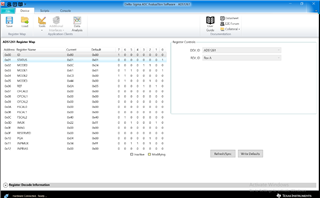
Best regards,
Marcel Beck



